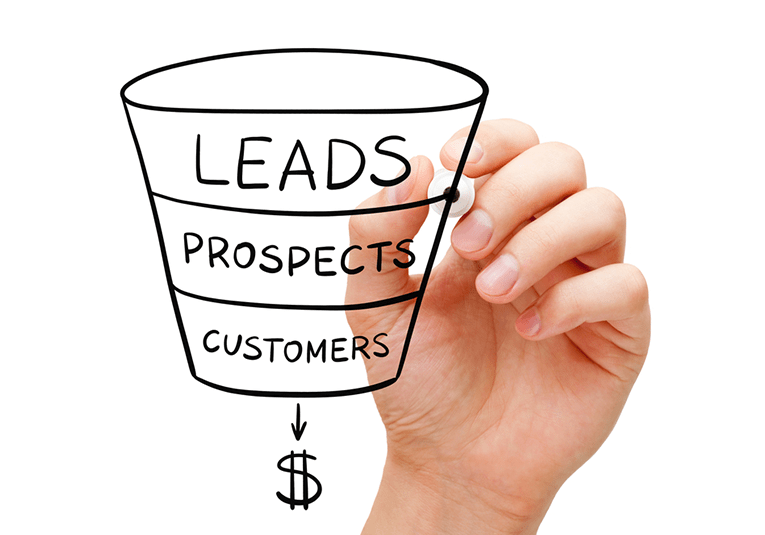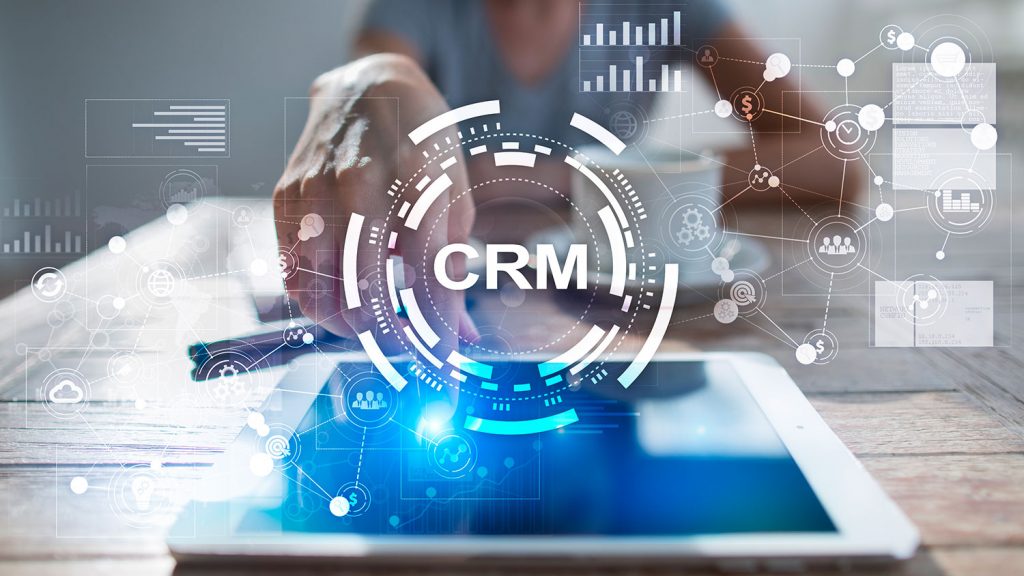Are you happy with your online lead generation?
Let’s start with a common statement; Cash is king.
Whether generated from sales or from financing, without it, your business cannot survive.
But, I argue that this statement is in fact, wrong.
Rather, I argue that ‘Cash flow is king.’
Notice the addition of the word ‘Flow.’
Why the play on words?
Cash implies a tangible source of capital.
Cash flow implies a tangible, and more importantly, a renewing source of capital.
The difference may seem minor and trivial.
But, according to Business Insider, 84% of businesses fail because of poor cash flow.
In summary, no cash flow means no cash.
Even if you start well capitalized, the end result will be the same if you’re not profitable also.
Your incoming cash flow must be consistently greater than your outgoing expenses.
So, before I ask if you’re happy with your online lead generation, it’s better to ask; are you happy with your cash flow?
Before you answer, first consider a few more questions:
- Is your bank balance low, zero, or negative (debt)?
- Are client payments inconsistent?
- Are your sales irregular?
- Do you receive inquiries from poor quality leads?
- Do you receive too few quality leads?
If you’ve answered yes to any of the questions above, then please read on!
The point I want to prove is that effective lead generation supports cash flow.
Secondly, consistent lead generation is a prerequisite of consistent and profitable cash flow.
And finally, given the ‘New Normal‘ that we find ourselves in, online lead generation is thus a must.
My aim with this article is to help you with your online lead generation.
I’ll share with you the No.1 framework needed to achieve this goal.
If you follow my suggestions, you’ll see an improvement in your cash flow as a result.

Why do businesses suffer from poor cash flow?
As highlighted earlier, poor online lead generation can result in poor cash flow.
And from my experience, there is one core reason behind poor online lead generation.
The culprit…a complete absence or a wholly inadequate marketing and sales funnel (MSF).
If your goal is consistent, profitable cash flow, a professional MSF is essential.
The MSF is the No. 1 key ingredient in being able to generate leads 24×7 for your business.
Many businesses lack this essential framework for success, robbing themselves of cash flow.
A continuous stream of leads is needed to create opportunities for the sales team to close.
Closed sales opportunities thus generate your cash flow.
If your company has an inconsistent MSF strategy, this will reflect in your cash flow.

But wait, what is a Marketing and Sales Funnel?
Before a prospect can become a client, imagine that they must travel through a series of stages:
- From a curious, enquiring prospect
- To a qualified lead with demand
- To a paying client
The stages of this ‘prospect to lead to customer’ is the outline or framework of your MSF.
Sometimes people refer to these 3 stages as ‘top-of-the-funnel’, ‘middle-of-the-funnel’ and ‘bottom-of-the-funnel.’
You can further breakdown the stages of an MSF to the following:
- Discovery: The prospect must discover your brand
- Contact: They need to book a sales consultation
- Needs Analysis: A needs analysis must be conducted
- Proposal: The prospect must receive and review your proposal
- Sale: They decide to buy and complete payment
- Delivery: They experience your service
- Loyalty: If they’re happy, they’ll buy again and even send a few referrals your way!
The above list represents only a simplified MSF for example purposes.
Stop now and take this moment to determine the key stages of your company’s MSF?

The key to an effective MSF is simplicity.
Do not fall into the trap of complexity when designing your MSF.
A complex MSF may look good, but implementation will be a challenge for the following reasons:
- Resource Intensive: lots of time and money will be needed to build it
- Difficult to Manage: complexity requires oversight; you may not have adequate bandwidth
- Lackluster Results: each stage in your MSF is a potential bottleneck, fewer the better

A framework for a successful MSF:
Once you have outlined the core stages of your MSF, you need to consider a few important factors.
The factors below will ensure effective online lead generation and cash flow as a result:
Traffic Sources
With online marketing and lead generation, ‘traffic’ means users a.k.a. people a.k.a. your prospects!
Where physical retail and F&B outlets may seek ‘more foot traffic’, you’ll want ‘more online traffic.’
For a productive MSF, your goal is to first generate high levels of online traffic.
But, not all online traffic is equal; your traffic should consist only of your target audience.
Where and how do you generate quality online traffic?
Online traffic can come from many ‘traffic sources.’
Quick examples of traffic sources include:
- 3rd Party Websites: news websites, online marketplaces, forums, etc
- Search Engines: Google, Bing, Yahoo are most used
- Social Media: Facebook, Instagram, LinkedIn, Twitter, YouTube, etc
When designing an MSF for online lead generation, first list your traffic sources.
And to do this well (because quality is key, not quantity):
A) you must have a clear understanding of who you are trying to sell to (your target audience).
And B) you must have a clear understanding of where these people congregate online.
And C) for powerful marketing, you must know why these people are congregating there.
For a simple example, let’s pretend you sell widgets to the Oil & Gas sector.
Following the A, B, C process above:
A) Your target audience is CEOs of Oil & Gas companies
B) They commonly visit major Oil & Gas News and leverage LinkedIn.
C) They visit Oil & Gas websites and LinkedIn for industry research. So consider advertising interesting stats about the effectiveness of your widgets.
Where should you send your online traffic to?
Now that you know who your targeting and where to reach them, you’ll want to send this online traffic to your:
- Website
- Campaign landing pages
- Social media pages
These three online touchpoints usually create opportunities to generate a lead.
E.g., you may wish to send online traffic to your website where a ‘Contact Form’ awaits.
A contact form asks preliminary contact information with the email address being essential.
Only by the online traffic completing the contact form can they then speak to a member of your sales team.

An MSF needs a good backbone, and that’s your CRM
CRM stands for Customer Relationship Management.
We can use CRM’s not only for managing customers, but also leads and sales opportunities / deals.
There are many to choose from, and many resources online to help you choose one right for your business.
Why do you need a CRM for your MSF?
To store the contact information of the leads generated by your online traffic.
Your CRM can also store leads from other traditional sources as well.
But, with online lead generation there’s one neat trick, you don’t have to do manual data entry!
Your CRM can connect to your website, campaign landing pages and social media pages.
Forms submitted by your online traffic will have the lead’s details sent to the CRM.

Many CRM’s allow for ‘lead nurturing.’
Today’s CRMs can do much more than store your lead’s contact details.
Many now include:
- Lead scoring
- Mass emailing
- Sales tracking
You can use these functions to ‘nurture’ your leads and sales deals.
Frequent messages with your leads will build familiarity and trust over time.
The end result? More qualified leads and sales opportunities that do not fall through the cracks.
I wish to focus more on online lead generation, but to recap, do not forget to include a CRM in your MSF.
Define ‘performance metrics’ for continuous MSF optimization
“What gets measured, gets managed.”
Peter Drucker, Leading Business Management Consultant
The objective of your MSF is to find and funnel online prospects to become leads and then paying clients.
This supports healthy cash flow for your business to prosper.
But, how will you know if your MSF is working well?
The easiest sign will be an empty bank account!
The empty bank account is only a symptom though, and not the cause.
You’ll want to review your MSF to find the ‘bottlenecks’ that are limiting its performance.
I say ‘bottlenecks’ because sometimes an MSF is also called a ‘Funnel / Pipeline.’
This is why you’ll want to review data about the performance of each stage in your MSF.
You’ll want to determine the ‘performance metrics’ for each stage in your MSF.
A metric means the type of data relevant to that stage that highlights performance.
For example, you may need to share a quote (stage 1) before you can move to close a sale (stage 2).
These 2 stages would be a significant part of your MSF and client’s journey with your business.
A suitable performance metric to measure in stage 1 is the ‘Number of Quotes Sent.’
A suitable performance metric to measure for stage 2 is the ‘Number of Sales Deals Closed-Won.’
If too few quotes are sent out by your sales team, there will be too few opportunities to close into sales revenue.
This then leads us to question why we’re sending out too few quotes?
Is the sales team receiving enough leads? Or is the sales team are not doing their job well?
The point here is that the performance metrics have:
A) helped you identify a ‘bottleneck’ in your MSF
B) will allow you to ask the right questions to fix the bottleneck and improve the flow
If you would like further resources to improve your sales, please check out these links:
Top 5 Tips to Sharpen Your Online Sales Skills
3 Reasons Why Sales Stories Help You Close Deals Faster
The New Normal – 8 Secrets Professional Salespeople Need to Know

Conclusion
I hope that the main take-away for you after reading this article is ‘macro’ vs ‘micro.’
Many business owners and sales leaders fret about ‘micro’ marketing and sales tactics.
They invest significant time and money in micro strategies with the aim to improve cash flow.
But they end up frustrated by the lack of returns from their time and money invested.
What they’re missing is the ‘macro’ view of how all the ‘micro’ elements pull together.
They cannot visualize how their prospects should move from lead to sale and beyond.
For example, an airplane is an important part of how you get from A to B; but you can’t reach your destination without:
- A taxi / bus / car / train / subway
- An airport
- Your passport & ticket
- Thousands of humans & machinery working in-sync
You must design a macro perspective of your client’s journey with your business also.
This macro perspective is your Marketing and Sales Funnel (MSF).
A well implemented MSF will:
- Result in excellent online lead generation
- Create many sales opportunities
- Generate positive cash flow to finance your business
But remember, an effective MSF is usually a simple design.
Ditch complexity in favor of consistency.
For an effective MSF, also ensure you detail your:
- Online Traffic Sources
- A CRM
- Performance Metrics
Designing a MSF for online lead generation and positive cash flow can be a challenge.
You may want professional help to design your company’s MSF.
If this is the case, book a free consultation with the digital marketing team at React.
You can book a convenient time for your consultation by clicking here.
Otherwise, I wish you all the best and success designing your MSF!

Recent Comments